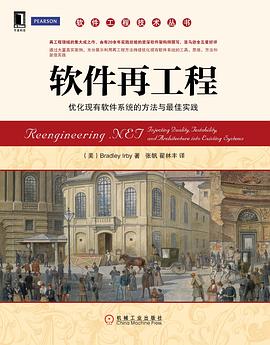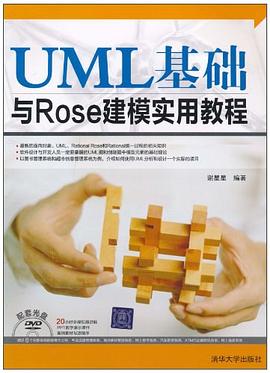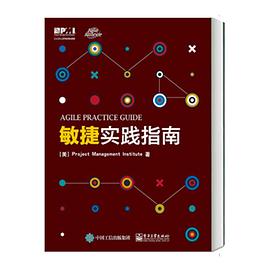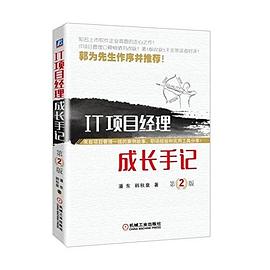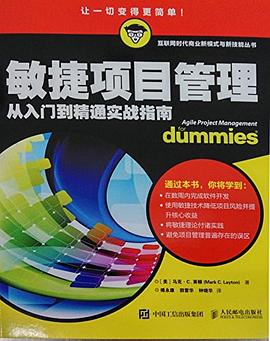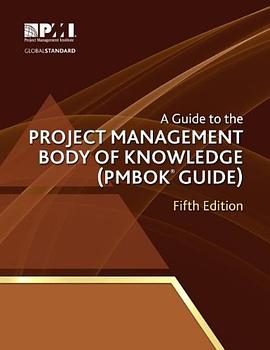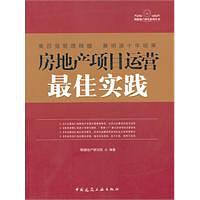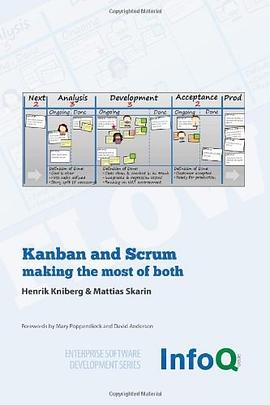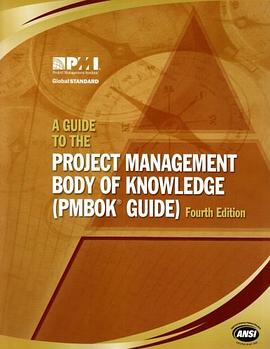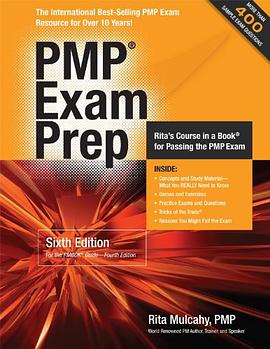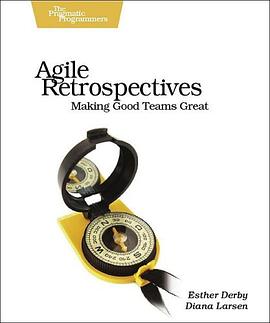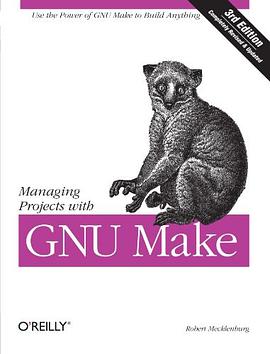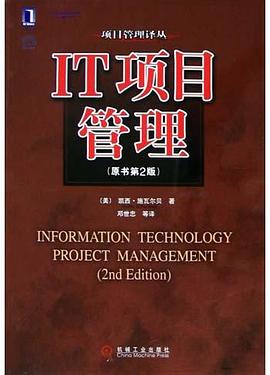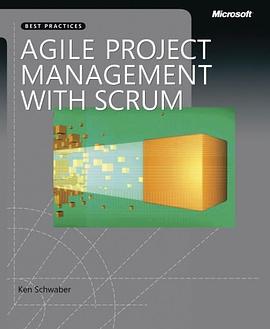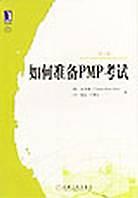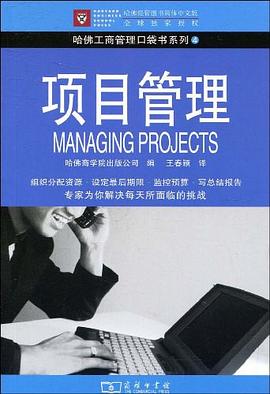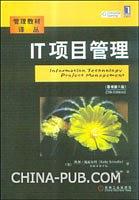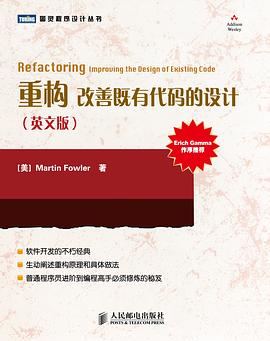

具體描述
重構,一言以蔽之,就是在不改變外部行為的前提下,有條不紊地改善代碼。多年前,正是本書原版的齣版,使重構終於從編程高手們的小圈子走齣,成為眾多普通程序員日常開發工作中不可或缺的一部分。本書也因此成為與《設計模式》齊名的經典著作,被譯為中、德、俄、日等眾多語言,在世界範圍內暢銷不衰。
本書凝聚瞭軟件開發社區專傢多年摸索而獲得的寶貴經驗,擁有不因時光流逝而磨滅的價值。今天,無論是重構本身,業界對重構的理解,還是開發工具對重構的支持力度,都與本書最初齣版時不可同日而語,但書中所蘊涵的意味和精華,依然值得反復咀嚼,而且往往能夠常讀常新。
著者簡介
Martin Fowler 世界軟件開發大師,在麵嚮對象分析設計、UML、模式、XP和重構等領域都有卓越貢獻,現為著名軟件開發谘詢公司ThoughtWorks的首席科學傢。他的多部著作《分析模式》、《UML精粹》和《企業應用架構模式》等都已經成為膾炙人口的經典。
其他參編者
Kent Beck 軟件開發方法學的泰鬥,極限編程的創始人。他是Three Rivers Institute公司總裁,也是Agitar Software的成員。
John Brant和Don Roberts The Refactory公司的創始人,Refactoring Browser http://st-www.cs.illinois.edu/users/brant/Refactory/)的開發者,多年來一直從事研究重構的實踐與理論。
William Opdyke 目前在朗訊貝爾實驗室工作,他寫的關於麵嚮對象框架的博士論文是重構方麵的第一篇著名文章。
圖書目錄
The Starting Point 1
The First Step in Refactoring 7
Decomposing and Redistributing the Statement Method 8
Replacing the Conditional Logic on Price Code with Polymorphism 34
Final Thoughts 52
Chapter 2: Principles in Refactoring 53
Defining Refactoring 53
Why Should You Refactor 55
When Should You Refactor 57
What Do I Tell My Manager 60
Problems with Refactoring 62
Refactoring and Design 66
Refactoring and Performance 69
Where Did Refactoring Come From 71
Chapter 3: Bad Smells in Code (by Kent Beck and Martin Fowler) 75
Duplicated Code 76
Long Method 76
Large Class 78
Long Parameter List 78
Divergent Change 79
Shotgun Surgery 80
Feature Envy 80
Data Clumps 81
Primitive Obsession 81
Switch Statements 82
Parallel Inheritance Hierarchies 83
Lazy Class 83
Speculative Generality 83
Temporary Field 84
Message Chains 84
Middle Man 85
Inappropriate Intimacy 85
Alternative Classes with Different Interfaces 85
Incomplete Library Class86
Data Class 86
Refused Bequest 87
Comments 87
Chapter 4: Building Tests 89
The Value of Self-testing Code 89
The JUnit Testing Framework 91
Adding More Tests 97
Chapter 5: Toward a Catalog of Refactorings
Format of the Refactorings~103
Finding References 105
How Mature Are These Refactorings 106
Chapter 6: Composing Methods 109
Extract Method 110
Inline Method 117
Inline Temp 119
Replace Temp with Query 120
Introduce Explaining Variable 124
Split Temporary Variable 128
Remove Assignments to Parameters 131
Replace Method with Method Object 135
Substitute Algorithm 139
Chapter 7: Moving Features Between Objects 141
Move Method 142
Move Field 146
Extract Class 149
Inline Class 154
Hide Delegate 157
Remove Middle Man 160
Introduce Foreign Method 162
Introduce Local Extension 164
Chapter 8: Organizing Data 169
Self Encapsulate Field 171
Replace Data Value with Object 175
Change Value to Reference 179
Change Reference to Value 183
Replace Array with Object 186
Duplicate Observed Data 189
Change Unidirectional Association to Bidirectional 197
Change Bidirectional Association to Unidirectional 200
Replace Magic Number with Symbolic Constant 204
Encapsulate Field 206
Encapsulate Collection 208
Replace Record with Data Class 217
Replace Type Code with Class 218
Replace Type Code with Subclasses 223
Replace Type Code with State/Strategy 227
Replace Subclass with Fields 232
Chapter 9: Simplifying Conditional Expressions .237
Decompose Conditional 238
Consolidate Conditional Expression 240
Consolidate Duplicate Conditional Fragments 243
Remove Control Flag 245
Replace Nested Conditional with Guard Clauses 250
Replace Conditional with Polymorphism 255
Introduce Null Object 260
Introduce Assertion 267
Chapter 10: Making Method Calls Simpler 271
Rename Method 273
Add Parameter 275
Remove Parameter 277
Separate Query from Modifier 279
Parameterize Method 283
Replace Parameter with Explicit Methods 285
Preserve Whole Object 288
Replace Parameter with Method 292
Introduce Parameter Object 295
Remove Setting Method 300
Hide Method 303
Replace Constructor with Factory Method 304
Encapsulate Downcast 308
Replace Error Code with Exception 310
Replace Exception with Test 315
Chapter 11: Dealing with Generalization319
Pull Up Field 320
Pull Up Method 322
Pull Up Constructor Body 325
Push Down Method 328
Push Down Field 329
Extract Subclass 330
Extract Superclass 336
Extract Interface 341
Collapse Hierarchy 344
Form Template Method 345
Replace Inheritance with Delegation 352
Replace Delegation with Inheritance 355
Chapter 12: Big Refactorings (by Kent Beck and Martin Fowler) 359
Tease Apart Inheritance 362
Convert Procedural Design to Objects 368
Separate Domain from Presentation 370
Extract Hierarchy 375
Chapter 13: Refactoring, Reuse, and Reality (by William Opdyke) 379
A Reality Check 380
Why Are Developers Reluctant to Refactor
Their Programs 381
A Reality Check (Revisited) 394
Resources and References for Refactoring 394
Implications Regarding Software Reuse and Technology Transfer 395
A Final Note397
References 397
Chapter 14: Refactoring Tools (by Don Roberts and John Brant) 401
Refactoring with a Tool 401
Technical Criteria for a Refactoring Tool 403
Practical Criteria for a Refactoring Tool 405
Wrap Up 407
Chapter 15: Putting It All Together (by Kent Beck) 409
References 413
List of Soundbites 417
Index 419
· · · · · · (收起)
讀後感
《重构》给我最大的收获,其实是想法而非技巧。 开发人员的完美主义倾向,容易变成他们做Big Design Up Front的驱动力。而在现实的环境中,时间、资源等约束条件,通常不会允许我们进行过于详细的设计。 我认为最好的做法是,轻量级的设计 + 适当的重构,迭代地开发出满足各...
評分代码的坏味道章节描述了常见的不良代码,而且基本上流行于各种编程语言。 第6~11章概括了一些java中的重构手法,是作者在实际操作过程中重构笔记的基础上总结而成,对于我们非Java程序员来说选择性阅读即可。 重构手法中包含了不少譬如提炼函数和内联函数这样的相反的操作,这...
評分书中说过重构的思想由来已久,只不过没人写成书籍罢了。 个人感觉如果你看完这本书只看到了思想,那你就错过了很多有价值的东西。小步骤的重构,如何最大限度的不引入bug才是书中要告诉大家的。像了解重构思想,只看前几章就够了。我个人认为书中最有价值的东西恰恰是进行重构...
評分纸张很赞,只是排版松散,书就比较厚了。 本人对代码有洁癖,不自觉的一直会调整过去的代码,也需要对照大师总结的规律反思一下。 重构的基础能力在于能够嗅出代码中的坏味道(Bad smell),甚至反模式(Anti-pattern),因此要结合相关书籍一起阅读了。 最近在看的肖鹏一篇文...
評分纵览武侠江湖,制胜法门不外两项,内功和外功。二者得一可天下去得,但最终皆入内外兼修之境 倚天是自内而外,先修内功九阳真经,然后以此为基础,加上太极拳和太极剑,最终成就天下第一高手 笑傲是自外而内,先学独孤九剑,后学吸星大法,最后学易筋经。 神雕也不外如是,玉女...
用戶評價
主要是代碼層次的經驗,大牛間逐漸形成的一些無形規範,讀的很快,有時間可以再翻下,迴頭對照自己的代碼。
评分主要是代碼層次的經驗,大牛間逐漸形成的一些無形規範,讀的很快,有時間可以再翻下,迴頭對照自己的代碼。
评分主要是代碼層次的經驗,大牛間逐漸形成的一些無形規範,讀的很快,有時間可以再翻下,迴頭對照自己的代碼。
评分2013-07-20斷斷續續終於看完一遍瞭,後麵就放到桌子上當作參考手冊瞭,需要的時候翻翻//淘寶買的,很久沒買書瞭。紙質的有點臭,在桌子上攤開有段時間瞭,沒氣味瞭。
评分主要是代碼層次的經驗,大牛間逐漸形成的一些無形規範,讀的很快,有時間可以再翻下,迴頭對照自己的代碼。
相關圖書
本站所有內容均為互聯網搜索引擎提供的公開搜索信息,本站不存儲任何數據與內容,任何內容與數據均與本站無關,如有需要請聯繫相關搜索引擎包括但不限於百度,google,bing,sogou 等
© 2025 book.quotespace.org All Rights Reserved. 小美書屋 版权所有

